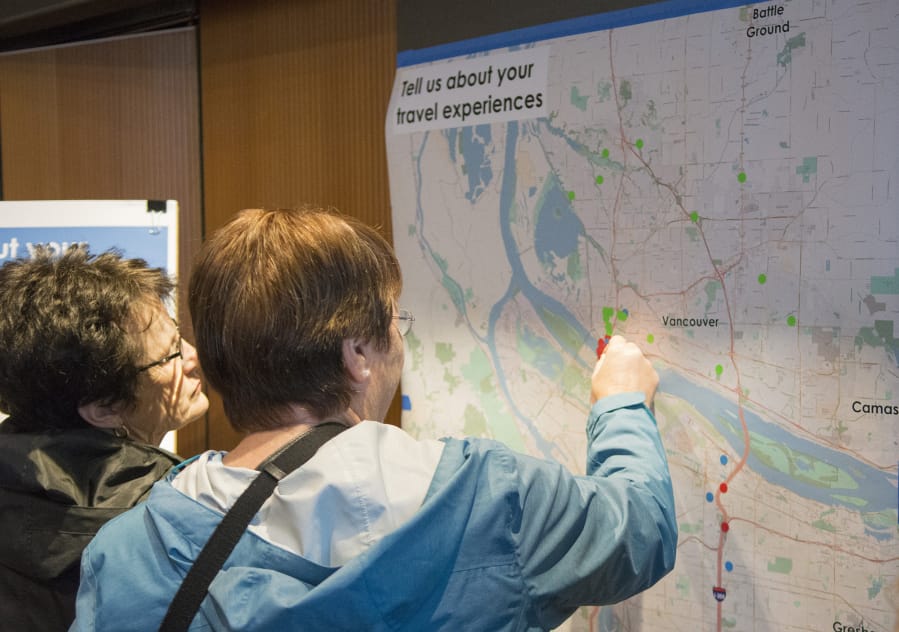Clark County resident Sharon Kenoski doesn’t have to commute to Portland anymore, but that doesn’t mean she’s in favor of having to pay a toll to drive into the city. Still, she thinks Southwest Washington residents need to play an active role in Oregon’s plan to put a value pricing system on Interstates 5 and 205 around Portland.
“I think this is a way to get Washington and Vancouver to wake up,” she said. “We can own it and gain something, or we can ignore it and not gain anything.”
Kenoski was just one of about 100 people that showed up Tuesday within the first hour of an open house on value pricing held by the Oregon Department of Transportation at the Vancouver Community Library. The room was lined with posters explaining, among other things, what was being proposed and where and why the tolls are being considered.
ODOT spokeswoman Kimberly Dinwiddie said the night was an opportunity for the agency to educate the public about what exactly is and isn’t being proposed, as well as listen to what concerns residents of Clark County may have. But because the agency is still a long way from making a decision, the answers might not have been as precise as some people might have hoped.
“We’re not used to paying tolls in Oregon,” Dinwiddie said. “We have more questions than there are answers themselves.”
Dinwiddie said she’s heard frustrations from people who live in Washington but work in Oregon who don’t like the idea of putting tolls on the highway because they already pay income taxes in Oregon.
But in Oregon, gas taxes — not income taxes — pay for road infrastructure.
The discussion of value pricing around Portland started last year when the Oregon Legislature passed a $5.3 billion transportation bill. The bill also directed the Oregon Transportation Commission to pursue putting tolls on I-5 and I-205 at the state line down to where the two freeways connect south of Tualatin, Ore.
ODOT is evaluating eight different possible tolling systems with the goal of improving traffic flow through the increasingly congested Portland metro area. However, it’s still a long way from settling on a plan, and at the earliest, paying a fee to use the highways in the city is still years away.
The agency argues that employing congestion pricing, or charging tolls at variable rates depending on road usage, could improve traffic flows on the two freeways by influencing how and when people drive. For example, some drivers might take alternate routes, drive at different times of day, or use mass transit if there are tolls. In other cases, some drivers might be willing to pay to use an express lane during rush hour.
The agency needs to get permission from the Federal Highway Commission by the end of the year. If their plan is approved, they will likely need to do more public outreach and study the environmental, and traffic impacts, then conduct a revenue analysis and develop an agreement with the Federal Highway Administration.
There are nearly 40 different operational value pricing programs in operation around the United States. The closest being in the Seattle area, where, for the last several years, the Washington Department of Transportation has relied on a handful of different tolling methods to mange traffic congestion, with mostly positive results.
But in Kenoski’s opinion, fixing the congestion issues in and around the Portland metro area requires bolder action than putting fees on the highways. She wants to see a new Interstate 5 bridge and a new vote on light rail.




